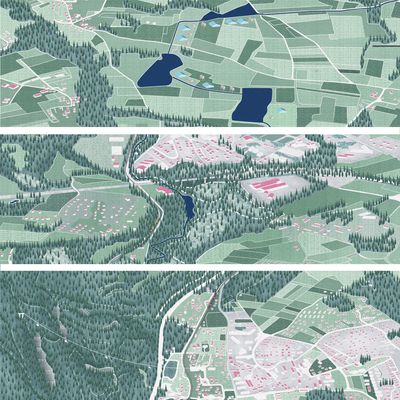Patchworking the Peri-Urban: Reciprocal Transformations in Greater GenevaLoukia Deli, Georgia Drakou, Amin El-Didi, and Svetlana Momcilovic
Today, the city and the rural remain separate entities in terms of functions, whereas ecosystem services manifest in the two areas differently, highlighting an unbalanced relationship. The city continues to act as a consumer of the rural. On one hand, the urban utilizes the gravel extracted from the countryside, while shaping it with construction waste. On the other, agriculture has evolved to be a more industrial practice. In this light, food and material production, as well as waste management, become more disconnected from urban inhabitants’ daily lives, while on the ground, these areas of mass production act more and more as isolated gaps in the ecosystem at large. The landscape of Greater Geneva is a prime example of this stark divide, where the metabolism of the expanding city is defining the shape of the countryside, dotting the border with sites of industrial extraction and utility. By leveraging soil as a tool for a bottom-up approach to production, recreation, and habitation sustained by circular cycles of material movement, the political border can become a site for reciprocation and integration with the landscape, rather than a separator.
